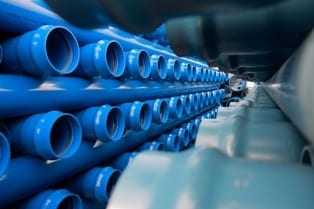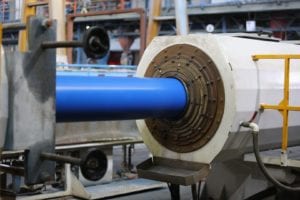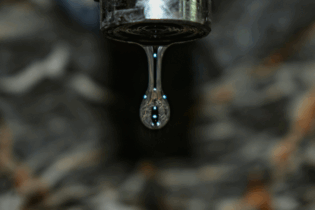
The plastic pipe industry in South Africa, a key infrastructural and critical asset of South Africa, is facing a crisis
Jan Venter, CEO of the Southern African Plastic Pipe Manufacturers Association (SAPPMA), recently wrote that it is because so many industries rely on pipelines to function that it lies “at the heart of South Africa’s infrastructure”.
Venter said that in 2016, a number of appeals were made to government by leaders in the industry regarding pipelines that had reached their lifespan years ago. Although promises were made to improve the country’s aging pipeline infrastructure, “not much has come from these talks”, Venter wrote.
SAPPMA asserts that the country’s water crisis is an “unavoidable” one and that this was due to the fact that the replacement of old water pipes around the country is long overdue.
Steel and asbestos pipes
Venter noted that in 2012, SAPPMA announced that existing steel and asbestos cement pipe infrastructure had corroded as they were installed more than half a century ago.
As pipes age, the corrosion can cause harmful substances to enter the water stream could cause potential health risks. Pipes also break over time and this has resulted in hundreds of thousands of rand being spent due to water leaks. Where maintenance is lacking, water shortages can occur as pipes need to be shut off completely and replaced.
Venter said these concerns were raised with government. “Their [government’s] reluctance to listen to us and slow action is now starting to take its toll in the light of severe water restrictions,” he said.
Venter also said that not enough was being done to address related problems such as the pollution of the country’s water sources.
How has this affected the plastics pipes industry?
Despite the challenging economy, Venter noted “exciting areas of growth in the plastic pipe industry”.
Two areas that demand a high supply of HDPE and PVC pipes are the water distribution and sewage disposal industries.
Venter added that the plastic pipes industry also remained hopeful that natural gas distribution will eventually contribute to the demand of plastic pipes.
As with all industries that have been economically affected, Venter said there have been concerns that electricity could still have a crippling effect, as well as the need for modernising production equipment in order for local pipe manufacturers to become more efficient.
SAPPMA has maintained its view that not enough has been happening to improve the country’s water infrastructure.
“As an industry, we are committed to doing everything in our power to ensure the future of the industry through maintaining excellent quality and adhering to industry standards,” Venter said. “We want to make sure that we are part of the solution – not part of the problem.”









